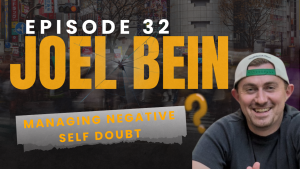A generation ago, executives were judged almost exclusively on quarterly results and their performance in the boardroom. Today, a leader’s influence is increasingly measured in pixels as much as in profit margins. Search engines, LinkedIn posts, and news mentions now form a parallel résumé, one powered by personal branding, that shapes perceptions long before a handshake or an earnings call.
It is not a vanity exercise, nor a diversion from the core work of leading teams and delivering results. Rather, it has become an essential dimension of modern leadership. Strong personal branding strengthens recruitment, accelerates partnerships, and positions leaders as industry voices worth following. In the absence of a visible digital presence, even the most accomplished professionals risk invisibility in the conversations that shape their industries (Moore, 2025).

Beyond Performance Metrics
Executives once leaned on institutional authority, titles, office size, corporate communications teams, to establish credibility. But in an era of decentralized media and peer-to-peer influence, authority is portable. A leader’s ability to project ideas, values, and vision directly to a digital audience can now amplify or undermine their professional stature.
Consider the way venture capitalists evaluate startup founders. They no longer just scan résumés and pitch decks. They scroll Twitter feeds, review LinkedIn articles, and search for keynote recordings. They want to see more than financial literacy; they want to see vision articulated with confidence. The same is true for board searches and C-suite recruitment. A strong track record matters, but so does the visible demonstration of leadership skills in public discourse (Harvard Business Review, 2023).
Executive Presence in a Digital World
The concept of executive presence has traditionally conjured images of commanding the room: a steady voice, measured gestures, a sense of gravitas that makes people listen. But today, the boardroom has an online counterpart. Presence is conveyed not only through speeches and meetings but also through profile photographs, the cadence of LinkedIn updates, the clarity of published thought pieces, and the tone of responses to public commentary.
Leaders who cultivate executive presence digitally project the same steadiness and clarity that once depended on physical rooms. They show consistency between message and medium, between values and action. That consistency builds trust, particularly among younger professionals who view authenticity as the core measure of credibility. In practice, this means a leader’s carefully curated LinkedIn summary carries as much weight as the introduction they deliver at a shareholder meeting (Public Relations Society of America [PRSA], 2024).
The Reputation Economy
If executive presence is how leaders appear, online reputation management is how they are remembered. Reputation now functions like currency, accruing through positive mentions, media features, and thought leadership, but just as easily diminished by neglect or missteps.
Google searches have become the first impression for investors, journalists, and potential hires. If favorable articles and insightful commentary dominate the first page, a leader appears not just visible but respected. If outdated bios, negative commentary, or irrelevant content surfaces instead, the perception is one of inconsistency or even incompetence. Leaders who treat online reputation management as an afterthought risk allowing others, sometimes critics, to define their narrative (Sprinklr, 2024).
The most effective executives are those who treat digital presence as an ongoing discipline rather than a reactive measure. They do not wait for crises to define their response; they consistently publish, engage, and monitor. They shape a digital legacy that mirrors their professional one.
From Digital Footprint to Boardroom Seat
The connection between online presence and boardroom opportunity is more than anecdotal. Studies indicate that a CEO’s personal reputation can account for nearly half of a company’s market value (Moore, 2025). Boards and investors are acutely aware of the symbolic weight of leaders. When those leaders demonstrate foresight, clarity, and authenticity in public forums, it elevates both their personal profile and the organization they represent.
Rising professionals face a parallel reality. For them, personal branding can accelerate visibility inside organizations, turning competence into recognition. A mid-level manager who regularly shares insights about industry shifts is more likely to be viewed as board-ready talent than a peer who remains silent. In competitive organizations, visibility is often the differentiator between two equally skilled candidates for promotion (Harvard Business Review, 2023).

The Long Game of Influence
Skeptics argue that focusing on personal branding distracts leaders from substance. But the most effective digital brands are not built on superficial self-promotion. They are built on clarity of purpose. Leaders who ground their messaging in values—innovation, ethical responsibility, long-term sustainability, create brands that resonate beyond themselves (Berkeley Executive Education, n.d.). Their content is less about what they have achieved and more about how they think, what they believe, and why it matters.
This long-game approach demands patience. Influence is not built through a single viral post but through a sustained rhythm of contributions. Over time, this rhythm generates trust, positioning the leader as a voice to be sought out in moments of uncertainty or opportunity. The payoff is measured in speaking invitations, advisory roles, and board appointments, but also in the quiet confidence of teams who feel led by someone visible, consistent, and authentic (PRSA, 2024).
The Leader as Narrative Architect
The future of leadership will belong to those who understand that results and reputation are inseparable. A strong balance sheet commands respect, but a strong personal brand commands attention. Together, they create influence.
From LinkedIn to the boardroom, leaders who invest in personal branding, demonstrate leadership skills in digital and physical arenas, cultivate executive presence, and practice vigilant online reputation management are not just protecting their careers. They are shaping the very narratives that will define their industries. In a world where perception and performance are intertwined, the leader’s most enduring asset is the story they tell, and the story others repeat.





































